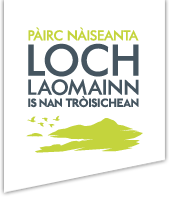
Future of Scotland’s first National Park up for discussion as consultation gets underway
Measures including more tree planting, sustainable transport services, affordable housing for local people and a ‘nature first’ approach to development are just some of the proposals set out as part of the step change required to ensure Loch Lomond & The Trossachs National Park has a sustainable future for generations to come.
Conversations about the future of the National Park get underway today (Wednesday 26th April), with the publication of a new draft National Park Partnership Plan and the start of a 12-week consultation when residents, businesses, communities and visitors will be asked about their priorities for the future of Scotland’s first National Park.
The draft five-year plan puts forward a 2045 vision and a wide range of proposals to prompt discussion, driven primarily by the scale and urgency of the nature and climate crises. The draft plan also recognises the changes in how people live, work and visit the National Park in recent years, particularly post-COVID 19 and the challenges and opportunities this offers.
It highlights opportunities to set a new direction for the National Park as a ‘climate-resilient place where people and nature thrive together’, focusing on three key areas:
- restoring nature
- creating a sustainable, low-carbon visitor destination
- enabling a greener economy and sustainable living
To capture and store more greenhouse gases in the National Park, it is proposed that the pace and scale of peatland restoration and new woodland creation steps up considerably.
Recognising that urgent action is required to restore nature, proposals set out where new habitats and networks for wildlife could be established to reverse the alarming decline in important species and features.
Low carbon local living, more affordable homes and opportunities for jobs and businesses in sectors such as sustainable travel, woodland creation and ecotourism are all proposed.
And with transport the single biggest source of emissions in the National Park, the Park Authority is pushing for a step change in how transport services are provided to make lower emission travel to and within the Park a more viable alternative and reduce the 79% of journeys currently made by car.
Dr Heather Reid, Convener of Loch Lomond & The Trossachs National Park Authority, said:
“We’re opening up a conversation to help us imagine the future of this National Park.
“Our National Park matters to all of us, to Scotland and to the planet and we have a small window of opportunity to tackle these huge challenges and help the Park flourish for future generations.
“It will mean doing things differently and doing much more of the positive things already underway – harnessing opportunities for new green jobs, affordable housing and sustainable transport, and supporting a shift in land use towards more regenerative, nature friendly management.
“We don’t have all the answers but we do know this – change is happening regardless and our collective response to that change is the opportunity to provide a sustainable future for generations to come.”
The National Park Partnership Plan is a five-year plan that guides how all of those with a role to play in looking after the National Park will work together to manage the Park and achieve a shared vision for the area.
The draft plan published today will be refined after the 12-week consultation period, using the feedback from partners, stakeholders and individuals to finalise the plan before it goes to Scottish Ministers for approval before coming into effect in 2024.
Gordon Watson, Chief Executive at Loch Lomond & The Trossachs National Park Authority, said:
“The time to act is now and that action needs to be bold. This draft plan lays out the actions we are proposing for the next five years to achieve the transformational long-term change our National Park needs but this needs to be a collective plan, a shared vision.
“We all have an opportunity to shape the change that’s coming for our National Park and we want to hear about people’s experiences, barriers and their ideas for the future of the National Park, whether that’s a family living in one of our communities, a farmer looking to diversify their activities or a visitor keen to help protect this special place.
“We can’t do this alone but collectively we can help shape the significant required to ensure the National Park’s people and places continue to thrive and that its natural assets can contribute significantly to Scotland’s efforts to restore nature, tackle climate change and have greener economic growth.”
Take part in the conversation about the future of Loch Lomond & The Trossachs National Park.

